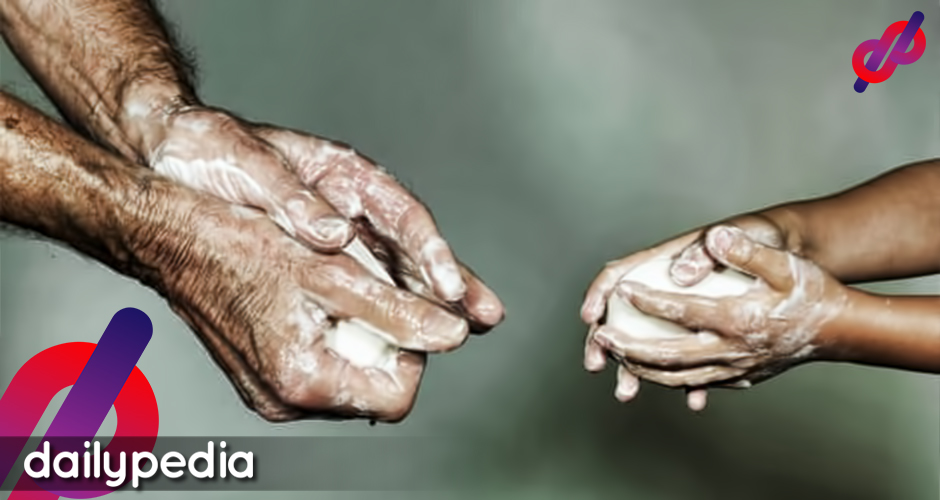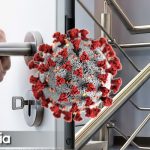Washing your hands with soap is recommended by health experts especially at a time like this.
The majority of people believe that soap does kill germs, but the specifics are only known by true experts on the subject.

Palli Thordason, a chemistry professor from The University of New South Wales, went on Twitter to explain to everyone why soap provides great protection from various viruses, including the COVID-19.
Palli tried to explain it in basic language.
1/25 Part 1 – Why does soap work so well on the SARS-CoV-2, the coronavirus and indeed most viruses? Because it is a self-assembled nanoparticle in which the weakest link is the lipid (fatty) bilayer. A two part thread about soap, viruses and supramolecular chemistry #COVID19 pic.twitter.com/OCwqPjO5Ht
— Palli Thordarson (@PalliThordarson) March 8, 2020
Soaps are designed to deactivate viruses, or in other words, kill them.
2/25 The soap dissolves the fat membrane and the virus falls apart like a house of cards and "dies", or rather, we should say it becomes inactive as viruses aren’t really alive. Viruses can be active outside the body for hours, even days.
— Palli Thordarson (@PalliThordarson) March 8, 2020
Disinfectants such as gels and other liquids are not really that effective in killing viruses, even if they have the component of alcohol.
3/25 Disinfectants, or liquids, wipes, gels and creams containing alcohol (and soap) have a similar effects but are not really quite as good as normal soap. Apart from the alcohol and soap, the “antibacterial agents” in these products don't affect the virus structure much at all.
— Palli Thordarson (@PalliThordarson) March 8, 2020
Other products have the same effects as the regular soap, but they are just more expensive. Alcohol wipes are also okay to use when soap is not available.
4/25 Consequently, many antibacterial products are basically just an expensive version of soap in terms of how they act on viruses. Soap is the best but alcohol wipes are good when soap is not practical or handy (e.g. office receptions).
— Palli Thordarson (@PalliThordarson) March 8, 2020
Palli continued a long thread explaining the chemistry behind the effects of soap on bacteria.
People commended Palli for sharing this information.
Sir, you have made someone whose graduate study 25 years ago was surface chemistry of amphiphilic macrocycles very happy! Thank you!
— Richard Hughes (@TevildoPofC) March 8, 2020
Best of #science_communication!
Thank you for explaining the 'science behind handwash' in a very simple language. #handwashing— Suraj Bhattarai (@DrBhattaraiS) March 8, 2020
Awesome thread. THANK YOU. I will translate and share with the Spanish audience.
— Pablo Fuente (@PabloFuente) March 8, 2020
That was fascinating! I always washed my hands (with soap) as soon as I come home, but I never realized that hand sanitizers did not work as well. I kind of thought they worked better, so I'd wash and then sanitize. Now I'll just do more scrubbing! Thank you so much!
— elizabeth alcinoe (@whizdaddy) March 8, 2020
Thanks Palli for a supper lesson in easily accessible language with excellent illustrations in supramolecular chemistry and nanotechnology. You have done chemistry and nanoscience proud on Twitter
— Fraser Stoddart (@sirfrasersays) March 8, 2020
Palli Thordarson has won many awards such as the New South Wales Young Tall Poppy Science Award in 2008, The International Society of Porphyrins and Phthalocyanines (SPP) / Journal of Porphyrins and Phthalocyanines (JPP): SPP/JPP Young Investigator Award for 2010 and the Le Févre Memorial Prize from the Australian Academy of Science for 2012.
Dr. Lucy Rogers, a science author, inventor, and a judge on the BBC2 show Robot Wars also proved this claim. Rogers went on Tiktok to demonstrate how soap really does get the job done against viruses.
In a bowl, Rogers mixed water with oil and pepper. The pepper represented the virus while the oil was the fat that holds the virus together. She dipped her finger into the water and nothing happened. She then soaped up her finger and dipped it again, this time the pepper split away from her finger.
The video has nearly 30k likes on TikTok.


